

Matebook X Pro: Is it really the best notebook?
Chic, fast, light and compact: On paper, Huawei’s Matebook X Pro has everything you could possibly wish for. But is it really the allrounder everyone says it is?
I need a new notebook. OK, need is maybe pushing it a bit. I want a new notebook is probably more accurate. As I like to shop beyond my means, my dream device would look something like this:
- 13-inch display
- 16 GB RAM
- at least 256 GB SSD
- current Intel i5 or higher
- light and compact
- optional: UHD touch display
I’m not asking for the impossible but I still haven’t managed to find the device that delivers the specs and sells me on quality. The Dell XPS 13 comes the closest to my perfect device, but I’m still waiting for the redesign. I started to prick up my ears with interest when I heard about Huawei’s second version of the Matebook. After all, the device is now available in our online shop – and not only that, we’ve got my favourite design. The only issue being I’d have preferred the silver one rather than the grey one.

Design, specs and accessories
- Display: 13.9 inch, 3000 × 2000 pixels
- touch screen
- Intel Core i7-8550U
- Nvidia Geforce MX150 2GB
- 16 GB RAM LPDDR3
- 512 GB NVMe SSD
In terms of design, Huawei takes inspiration for its Matebook X Pro from the MacBook, and it’s not the only manufacturer to draw on Apple’s expertise. When you close the devices and put them side by side, it’s hard to set them apart if you ignore the logo. The Matebook is plain yet elegant.
When it’s up and running, the Matebook and its almost edgeless display seems a bit more modern than the Macbook. Fortunately, the similarities aren’t limited to the outer appearance. The Matebook even feels high-value to the touch. Nothing clicks or creaks, and there aren’t any sharp edges like on Kevin’s Lenovo C930. On top of that, you can open it with one hand without the device tipping over backwards. The touchpad has just one flaw – more on that later. But in terms of weight, the 1.33 kg notebook is nice and light.
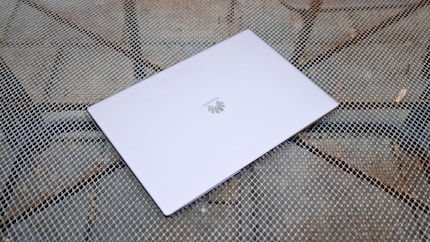
Although the Matebook X Pro features the same size of display as my old Lenovo 910, it’s much smaller. This means I no longer have to wrestle my notebook into my shoulder bag.
As for ports, you get the usual: 1x headphones, 2x USB C (you can use them both to charge and one of them is a Thunderbolt 3) and 1x USB A 3.0. But Huawei ups the ante and adds a USB C hub into the mix. As well as the connectors previously listed, this gives you an HDMI, a VGA, a USB C and another USB A port. But they missed an opportunity to build another SD card reader into the device.
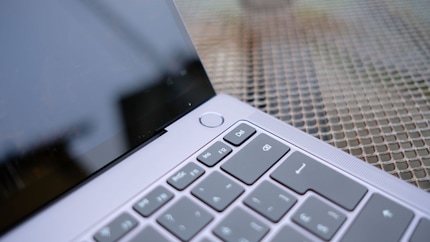
What’s unusual is the placement of the webcam between the F6 and F7 keys. Because it now pops up at the touch of a button, there’s no need to cover the camera when it’s not in use to be sure that no one’s spying on you.
The drawback to where it’s now placed is the viewing angle. Although the image quality on the 1 MP camera is enough for video calls, you end up staring at the other person’s nostrils. As people always gaze up at me one way or another, not much has really changed 😉. But if you video call regularly, I’d definitely consider buying a separate webcam.
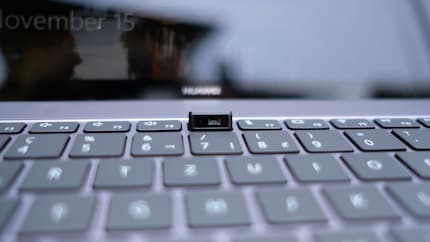
Bloatware
The other thing installed alongside your standard «Candy Crush» and Microsoft Office is Huawei’s PC Manager. This is where you can search for driver updates or sync your Huawei smartphone if you need to. The one thing that bothered me about the software was that it placed one icon on the right of the display in the taskbar. The icon only disappears when you end the programme. But then you lose the automatic driver updates, too.
Display
The display resolution is 3000 × 2000 pixels. While that’s not quite UHD, it’s still more than enough pixels to produce a razor-sharp image. Unfortunately, not all Windows programmes are optimised for these kinds of resolutions so I kept seeing tiny menus and text. But it’s not as bad as with UHD. The high resolution does admittedly put a lot of pressure on the battery but even photographers are dependent on high pixel density – in the same way as they rely on 100% colour fidelity in sRGB.
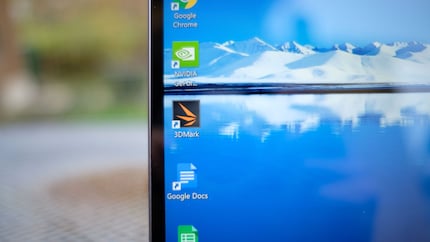
The 3:2 aspect ratio is also a welcome update, as it translates into more usable desktop in most applications. The paper format means you get black bars when you’re watching videos or playing games. But they weren’t big enough to bother me.
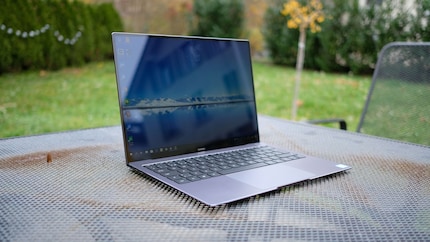
What else is there to say about the display? Its large viewing angle of 178° is impressive and it boasts good brightness at 450 nits. Even with the reflective display, it’s still pretty usable outside. As for the touch display, it reacts quickly and precisely. But because there wasn’t a 360° display, I didn’t use the touch input option that often.
Speakers
The Matebook speakers are located under the keyboard. You can see them through the two narrow strips next to the keyboard. Thanks to activated Dolby Atmos, they produce a surprisingly powerful sound. Granted, I never thought the sound was coming from higher up – I could tell it was from under the keyboard – but the quality is very good for laptop speakers.
Battery
The Matebook houses a 57.4 Wh lithium polymer battery. When you’re using it for standard office use (writing, surfing the net and watching YouTube now and again), it lasts between eight and nine hours when brightness is set at 75%.
In the HeavyLoad stress test, all processes are used to capacity and so the Matebook was defeated after about two hours. This result put it slightly ahead of the competition. To round off my tests, I tried continuous YouTube streaming. At 75% brightness, the Matebook held out for 6 hours 45 minutes, which is impressive. The Lenovo C930 was already flagging after five and a half hours.
Touchpad and keyboard
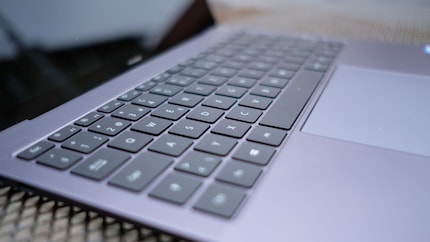
One of the most important things about a notebook is the touchpad. This is probably the not-so-groundbreaking verdict all manufacturers come to. And yet very few manage to outshine MacBook as the market leader. However, Matebook is closing in. The touchpad is a good size, even though it’s not as huge as Apple’s notebooks. Its reaction is precise and multi-touch input also works without any lagging. The only thing that bothers me somewhat is that it clatters a bit when you type. For instance, sometimes when I want to mark a segment of text by typing rather than clicking, I get told I’ve made a typo.
As a result, the touchpad doesn’t feel as high-end as it could. It sounds a bit over the top but it comes across as shoddy. It’s nothing that’s going to give me sleepless nights; it’s just not an attractive detail.

The backlit keyboard also impressed me from the moment I got my hands on it. The keys might be quite flat and the 1.22 mm key drop is also rather short but the keyboard is an absolute dream to type on. I hardly have any typos and the input is accurate – any time I press a key, the right thing comes up on the screen.
For a change, all the keys are actually in the right place again. It’s a real pain when the manufacturers always come up with new layouts, despite the fact we agreed on one design quite some time ago. Just wait till you see my colleague Martin Jud’s review of the MSI-GS65 gaming laptop.
Performance
Huawei has treated the Matebook to its own Nvidia graphics card. Before you get too excited, I have to remind you it’s only an MX 150 and the cheapest version at that. Sorry to have to bring you back down to earth with a bump.
There is a more efficient version and it would have been possible to integrate it. It’s based on the GP108 chip in the Pascal series, making it the mobile equivalent of GTX 1030. However, the MX 150 is noticeably faster than integrated graphics chips such as the Intel UHD Graphics 620, which is also available.
But the Matebook Pro graphics card won’t live up to expectations for serious gaming. If you set it to full HD and reduce the graphics details, you can run «Overwatch» at an average of 50 fps. Even the benchmarks reflect the fact this isn’t the ultimate gaming machine in spite of its dedicated graphics card.
3D Mark Firestrike scored just 2,411 points. Martin’s MSI gamer notebook managed more than 12,000 points with a GTX 1070. So it really only is good for simple games or those with minimal details. It’s not designed for serious gaming.
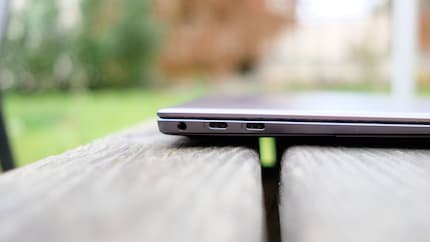
In any case, given the high resolution and colour-true display, the Matebook is designed more for image editing. This is where the inbuilt four-core Intel i7-8550U comes in. It’s clocked at 2.0 GHz and can crank up to 4 Ghz in turbo. The Matebook’s embedded processor boasts a TDP of 15 W. the higher the power input, the longer the notebook can work under full load before the CPU gets throttled.
The eight available threads are perfect if you compile multi core. In other words, this notebook will also be for you if you’re a programmer. But even if you’re not, more cores and threads help when you’re surfing the web.
In Cinebench R15, Huawei scored 534 points in the CPU test. In this instance, the Lenovo Yoga C930, which Kevin reviewed in detail here came out on top with its 25 W power consumption and identical processor.
Thanks to its Nvidia card, Huawei scored 90.91 fps in the OpenGL test. This made it over 60% faster than the Yoga, but it came in behind notebooks with «real» graphics cards, such as the ultrabooks Martin tested. They all reached between 95 and 110 fps. Nevertheless, the Matebook’s scores prove it is suitable for image editing and cutting videos.
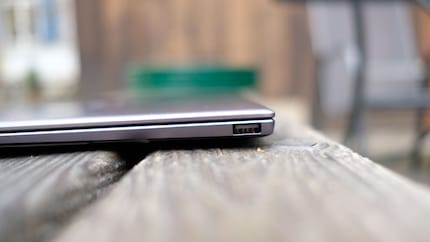
In the Geekbench, the Matebook came in at the upper mid band with the following values: 4,907 points in single core and 14,421 with multicore. This meant it fared almost identically to the Yoga C930. But things changed in the Compute benchmark, which tests image editing specifically. It was here that the X Pro scored a fabulous 41,520 points, qualifying it as one of the top devices with comparable features according to Geekbench rankings.
When the Matebook runs at full load, you can certainly hear the fan, but it’s still within the scope of tolerable. But in any case, I’ve only ever noticed that when I’ve been gaming or doing benchmark tests. The fans don’t switch on for standard office applications – and if they do switch on, you’ll usually barely notice them. On the whole, noisiness isn’t an issue with the Matebook.
The same goes for heating. The wrist rests do tend to get warm over time if you really put the notebook through its paces. But it never heated up by an alarming amount.
The benchmarks also confirm my suspicion. I was impressed by the Matebook’s working speed all along. And of course the device is brand new but still: each application starts straight away. Chrome has never been so fast despite the fact I had over 30 tabs open, and even Photoshop and the like run at a rate of knots.
Verdict
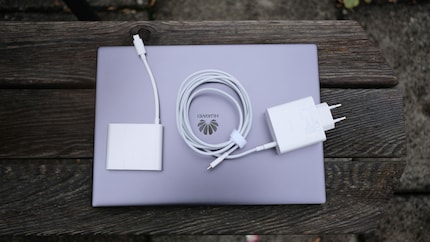
Huawei has delivered a fantastic device with the Matebook X Pro, which does a fine job almost completely across the board. From workmanship to design and performance, there really isn’t anything to find fault with. The keyboard and trackpad are among the best my fingers have come across to date in terms of notebooks. I also much prefer the 3:2 form factor over 16:9 devices in the mobile sphere. And Huawei even throws a dock into the mix.
My only criticism would be the high price tag, which isn’t unheard of for devices of this calibre, but still. The other issue I have is with the original but not so practical positioning of the webcam. If you can live with those two bones of contention, you’ll want to get your hands on the Matebook X Pro, one of the best notebooks around right now.
As a child, I wasn't allowed to have any consoles. It was only with the arrival of the family's 486 PC that the magical world of gaming opened up to me. Today, I'm overcompensating accordingly. Only a lack of time and money prevents me from trying out every game there is and decorating my shelf with rare retro consoles.